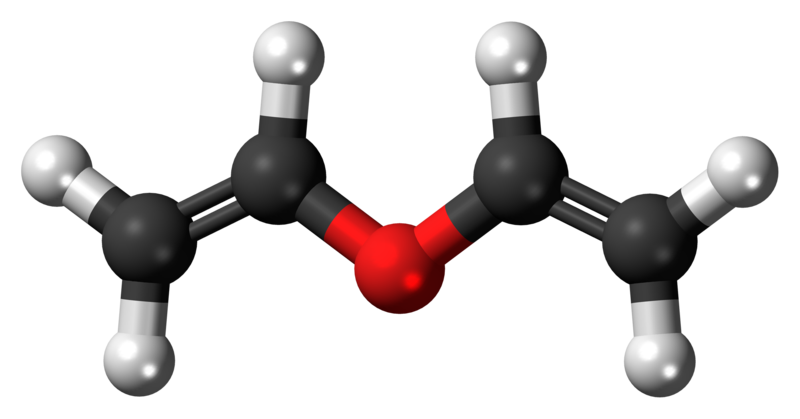Key Difference – Allylic vs Vinylic Carbons
官能基は、有機分子の異なる物理・化学特性を理解する上で非常に重要なものです。 アリル炭素とビニル炭素という用語は、炭素原子が分子内の二重結合に直接または間接的に結合しているかどうかを示しています。 アリル炭素とビニル炭素の重要な違いは、アリル炭素は二重結合した炭素原子に隣接する炭素原子であるのに対し、ビニル炭素原子は二重結合を共有する 2 つの原子のうちの 1 つであることです。
CONTENTS
1. 概要と主な違い
2.アリルカーボンとは
3.ビニルカーボンとは
4.表形式で見るアリルカーボンとビニルカーボンのサイドバイサイド比較
5.アリルカーボンとビニルカーボンの違い
6.アリールカーボンとビニルカーボンの違い
7.アリールカーボンとビニルカーボンの違いは? まとめ
アリルカーボンとは
アリルカーボンは、二重結合に隣接する炭素原子と言えます。 この炭素原子は二重結合に最も近い位置にありますが、二重結合の一部ではありません。 言い換えれば、この炭素原子は炭素原子に結合しており、その炭素原子が別の炭素原子に二重に結合しているのです。 二重結合の炭素原子はsp2混成である。 しかし、アリルカーボンはsp3混成である。 sp2混成の炭素原子とは単結合で結合しています。 この炭素原子の周りの電子密度は二重結合の炭素原子に比べて低くなっています。 一般式はCH3-CH=CH2で示される。 二重結合に直接結合していないため、二重結合上で起こる求電子付加反応などの影響を受けない。 このアリル炭素に結合している水素原子をアリル水素と呼びます。 アリル炭素は、炭素鎖と二重結合を結合させる橋渡し役として働くことができる。 このとき、C-H結合は通常のC-H結合よりも弱い。 それは、この炭素の周りの電子が二重結合によって変位してしまうからだ。

図01:赤い原子がアリル炭素
ビニル炭素とは
ビニル炭素は、他の炭素と二重結合を持つ炭素である。 sp2混成である。 ビニル基を持つ炭素は、同じくsp2混成の別の炭素と二重結合を作る。 この結合に関与する炭素は両方ともビニル基を持つ炭素である。 これらの原子の周りの電子密度は、アリル炭素原子の周りの電子密度より高いです。
炭素がアルケン官能基の中にあるので、ビニル基はアルケニル官能基の一種と言えます。 ビニル基は対応するアルケンに由来する。 従って、アルケニル炭素とも呼ばれる。 この炭素は、その両側から二重結合を介して他の炭素と結合することがある。 この場合、3つの炭素原子はすべてビニル基を持つ炭素と呼ばれる。 この式はCH2=C=CH2として与えることができる。 Since these carbons are directly bonded to the double bond, they undergo the reactions such as electrophilic addition.

Figure 02: Allylic and Vinylic Carbons
What is the difference between Allylic and Vinylic Carbon?
Allylic vs Vinylic Carbon |
|
| Allylic carbon is a carbon atom bonded to a carbon atom that in turn is doubly bonded to another carbon atom. | Vinylic carbon is a carbon that is involved in a double bond with another carbon. |
| Hybridization | |
| Carbon atom in an allylic group is sp3 hybridized. | Vinylic carbon is sp2 hybridized. |
| Bond Length | |
| C-H bond length in allylic carbon is higher. | Vinylic C=H bond is lower. |
| Bond Type | |
| Allylic carbon only forms a single bond. | Vinylic carbon can have either two double bonds in its sides or one double bond. It forms at least one double bond. |
| Number of Hydrogen Atoms | |
| Allylic carbon can have a maximum of 3 hydrogen atoms. | Vinylic carbon can have only two carbon as the maximum number. |
| Carbon Atom and Double Bond | |
| Allylic carbon act as a bridge to combine the double bond with the rest of the molecule. | Vinylic carbon makes the double bond. |
Summary – Allylic vs Vinylic Carbon
The difference between Allylic and Vinylic carbon depends on whether the carbon atom is bonded directly or indirectly to a double bond. Allylic carbon indirectly relates to a double bond whereas vinylic carbon is directly involved in a double bond. また、アリルカーボンはsp3混成であるのに対し、ビニルカーボンはsp2混成であることも重要な違いである
。